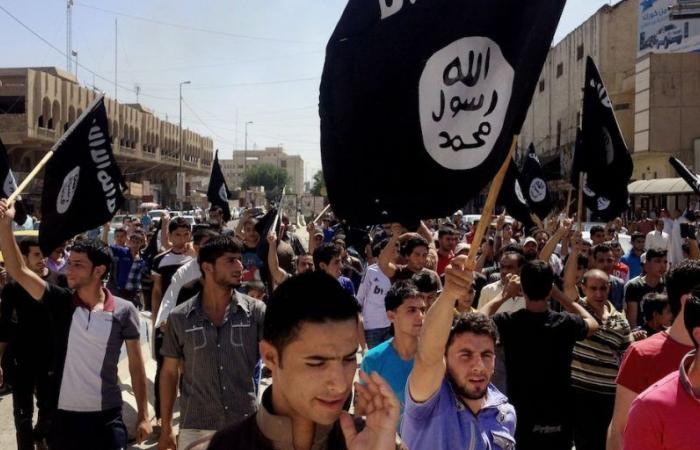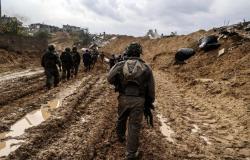Loading player
“Gather around your caliph, that you may return as before, kings of the earth and knights of war.” This exhortation, directed at all Muslims, was contained in the audio message released online with which on June 29, 2014, ten years ago, ISIS announced the birth of a caliphate, called the Islamic State. The Sunni Islamist group (one of the two main doctrinal branches of Islam, together with the Shiite one) had been known throughout the world for several months, and a few weeks earlier had obtained important military successes in Syria, managing to conquer large areas of it. In the months following the announcement, it expanded further, very quickly, until it controlled a good part of the territories of Syria and Iraq, to the point that the Islamic State became the central theme of international politics in the years that followed.
At its maximum expansion, ISIS controlled numerous provinces in Syria, Iraq and Libya, but was also active in Nigeria, Afghanistan and the Philippines. It attracted thousands of foreign fighters and terrorized international public opinion with elaborate propaganda videos of brutal hostage executions. He led and inspired some of the largest terrorist attacks ever carried out in Europe, then in 2019 he definitively lost the war against an international military coalition: today he no longer controls any area of Syria or Iraq, but the group remains active in various countries, clandestinely.
Abu Bakr al Baghdadi, in a photo taken from a video posted on July 5, 2014 (AP Photo/Militant video)
ISIS, acronym for Islamic State of Iraq and the Levant, assumed this name in April 2013: previously it was called al Qaeda in Iraq (AQI), a name that indicated its alliance with al Qaeda and the fact that it acted only in Iraq. The group was founded in 2000 by Abu Musab al Zarqawi, a Jordanian who from the 1980s and then 1990s – that is, since the war that many Afghans fought against the Soviets who had occupied the territory of Afghanistan – had been one of the main rivals of Osama bin Laden. Al Qaeda was born with the idea of developing a kind of Sunni foreign legion, which was supposed to defend the territories inhabited by Muslims from Western occupation. Zarqawi’s objective, however, was already to create an exclusively Sunni Islamic caliphate on the model of the first caliphates in the history of Islam.
In 2006, Zarqawi was killed by an American bomb. His successor was Abu Omar al Baghdadi (died in 2010): his place was taken by Abu Bakr al Baghdadi. In 2011, the group began to strengthen, managing among other things to free a certain number of prisoners held in Iraq; in 2014, it began a real war against the Iraqi government, occupying important cities and regions and achieved successes in Syria, eliminating or incorporating various other jihadist groups.
Less than three weeks before the announcement of the creation of the caliphate, ISIS had taken control of Mosul, an important city in northern Iraq. On June 29, the creation of the Islamic State, led by Abu Bakr al Baghdadi, called “Caliph Ibrahim” from his first name, was announced through an audio message broadcast via the internet and with some official documents in various languages.
Caliph in Arabic means “successor” and is the title attributed to the successors of the prophet Muhammad, the founder of Islam who died in 632 AD and who until then represented the temporal and spiritual authority: he governed the Umma (i.e. the religious community) , was judge of internal disputes, leader of the militias and main strategist.
The caliphate announced by ISIS was imposed in the area from Mosul to the outskirts of Aleppo (in Syria) and from Rutba (in southern Iraq) to the outskirts of Dayr az Zor (also in Syria). The group’s spokesman Abu Mohamed al Adnani said: “The legality of all emirates, groups, states and organizations becomes null and void with the expansion of the caliph’s authority and the arrival of his troops in their areas.”
Iraqi army soldiers display an Islamic State flag after capturing a militia group in 2014 (AP Photo)
At the time, it was not clear how long the nascent Islamic State could carry on the war (the number of its militants was not known), nor whether it would be able to effectively control the territory. However, in the following months, further military successes were added to the support of Boko Haram, a Nigerian Islamist movement, and the arrival of thousands of fighters from abroad. In November, they were estimated at 15,000, from 80 different countries; a year later, according to CIA data, they were 30,000, of which about 3,500 from Western countries.
In the territories controlled, the Islamic State took over the banks, the American-sourced weapons of the Iraqi army and the oil wells. He began selling oil to Syria and Türkiye and collecting taxes. He imposed the sharia, a literal and rigorous interpretation of Islamic law; the Christian, Turkmen and Yazidi minorities who had not managed to escape were ordered to abandon their possessions or pay a “protection tax”.
The military advance in the first months was overwhelming and an intense propaganda activity was launched, which already in August 2014 took the form of professionally shot videos of hostage executions. In the first, a black masked man, who was later known as Jihadi John and identified as a British man born in Kuwait, beheaded with a knife the American photojournalist and war correspondent James Foley, dressed in an orange jumpsuit similar to those used in the prison of Guantanamo, operated by the United States in Cuba.
That video, which shocked world public opinion, became a sort of format for many similar executions. Hostages were tortured, beheaded or burned alive. In other videos they directly threatened European countries and called militants abroad for terrorist actions.
According to ISIS propaganda, those actions were a retaliation for the bombings that the US administration of Barack Obama had authorized since July 2014, at the head of a coalition that included many Western countries (including Italy) and the Persian Gulf, among others. Since September 2015, Russia also intervened in the war against ISIS, mainly in support of the Syrian regime of Bashar al Assad.
Starting in 2015, ISIS claimed a long series of attacks that also hit Europe (Paris, Brussels, Manchester, London, Madrid among the major ones). The threat posed by ISIS and its affiliates abroad became the central concern of the foreign policy of most Western countries.
The city of Kobane in 2014 (AP Photo/Jake Simkin)
Since the end of 2014, with a greater involvement of foreign armies, and especially the US Air Force, the advance of ISIS on the ground stopped: one of the most important battles was that of Kobane, a Kurdish city on the border between Syria and Turkey: here the Kurdish resistance, supported by the US army, caused enormous losses to ISIS. Even the creation of a state proved very complex and inefficient: the so-called caliphate was unable to provide its inhabitants with basic necessities and services, nor security, and governed using the tools of fear and terror.
Already starting from 2015, ISIS lost a good part of its territories in Syria, but it took another four years before the definitive end of the war, after the fall of Baghuz, where the last resistance was concentrated. Caliph Abu Bakr al Baghdadi was killed in a US special operation in 2019.






